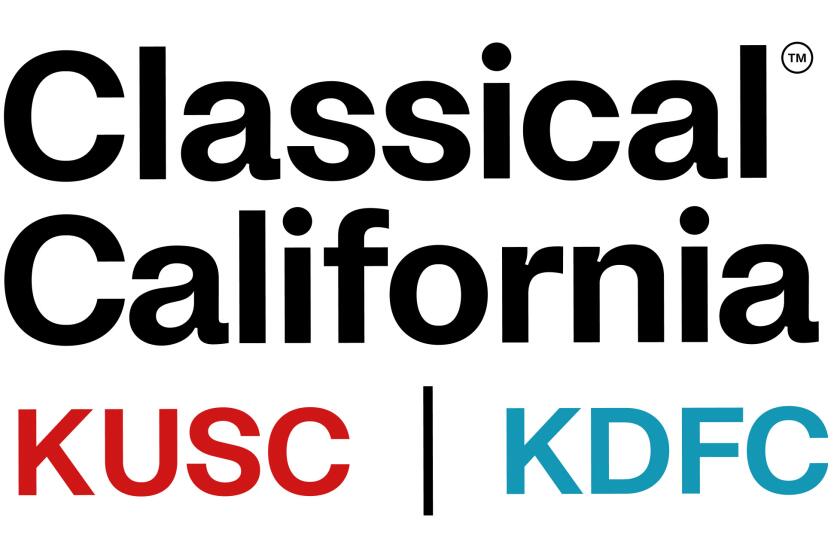JAZZ : Releases Bracket Hubbard’s Greatness
- Share via
FREDDIE HUBBARD ‘Minor Mishap.” Black Lion BLCD 760122. **** “Times Are Changing.” Blue Note 90905. ***
Here are a revealing pair of releases showing an artist first on the verge of greatness, and then several years past his peak.
“Minor Mishap,” originally recorded under the name of the late trombonist Willie Wilson (he is the only soloist on the two ballad cuts), is a brisk hard-bop date, long unavailable and now including five unissued alternate takes. Hubbard, in 1961 a fast-rising youngster new to New York, was almost in the Clifford Brown class. He shares credit with Wilson, also Pepper Adams and Duke Pearson on baritone sax and piano.
The newly recorded “Times Are Changing” reminds us that despite his numerous well-received accomplishments, every few years trumpeter Hubbard decides that the straight-ahead route doesn’t pay, and it is time to go where the money is. At times he seems subservient to the drum programming, the electronic percussion and other devices organized by Todd Cochran, who, here, is to Hubbard what Marcus Miller has become to Miles Davis. On “Was She Really There?” the main performer is not Hubbard but a pop singer, Phil Perry. The longest and best track is “Sabrosa,” with Hubbard showing his flair for the dramatic and exotic.
JOE WILLIAMS “In Good Company.” Verve 837 932 2. ****
High on the long list of this album’s virtues are Williams’ consistently potent sound, the Bird-inspired backing by Supersax on “Just Friends,” Marlena Shaw and Williams as a natural pair on the 16-bar blues “Baby You Got What It Takes,” and the other guest vocalist, Shirley Horn, singing and playing piano on “Too Good to Be True.” The other Horn duet, “Love Without Money,” is an empty-suit lyric and melody; the other Shaw duet, “Is You Is or Is You Ain’t My Baby,” is a dated novelty. Supersax reappears on “Embraceable You.” The Williams rhythm section, particularly guitarist Henry Johnson, acquits itself creditably as always.
TUCK & PATTI “Love Warriors.” Windham Hill Jazz WD-0116. *** 1/2
Another well-diversified set by arguably the most economic hit-producing group in music today. The program takes in Braziliana (“Cantador”), Lennon-McCartney, Carlos Santana, Jimi Hendrix, Stevie Wonder and a couple of pop standards, one of which, Gershwin’s famed “They Can’t Take That Away From Me,” is mistakenly credited on the review copy to composers Phillip and Carolyn Cross and a BMI publisher!
Patti sounds a bit out of breath on her original title tune. She has fun with the Charleston-era flavor of “Honey Pie,” and contributes the Feelgood Song of the Month with her own “Hold Out, Hold Up and Hold On.” Tuck’s guitar solo on Santana’s “Europa” is modestly effective. As in their previous album, the impact is that of an effortless effort with a very special charm.
ELIANE ELIAS “So Far So Close.” Blue Note. 91411. ** 1/2
Elias was her own producer, which means that nobody else can be credited--or blamed--for this commercially-oriented production, with its voices (Elias overdubbed?), synthesizers and a complete set of her own compositions. “Straight Across,” dedicated to the late Jaco Pastorius, is an odd, jumpy theme in short, wheezing phrases. Husband and brother-in-law Randy and Michael Brecker are heard from briefly. Best cuts: Elias, alone with her keyboards and synths, on “With You in Mind” and “Still Hidden.”
DON CHERRY “Art Deco.” A&M; SP 5258. ***
Given his extraterrestrial reputation, Cherry sounds surprisingly conservative on all but the free, anything-goes final cut. In fact, at times he suggests a hesitant version of the late ‘50s Miles Davis. His colleagues, all fellow Ornette Coleman alumni, are bassist Charlie Haden, whose solo highlights “When Will the Blues Leave?,” the Texas tenor saxophonist James Clay, who manages to find a new angle on “Body and Soul,” and the drummer Billy Higgins, who has “Passing” to himself.
NEW ORLEANS BRASS BANDS “Down Yonder.” Rounder 2062. * 1/2
Of the four bands presented here, the Dirty Dozen Brass Band is the most in tune and listenable. Regarding the rest, it’s mainly a question of whether one has been to New Orleans and wants to relive the experience. The repertoire? “Auld Lang Syne,” “The Saints,” “The Flintstones,” even “The Star Spangled Banner.” So these parade people got themselves a record date; more power to them.
GIL EVANS”Where Flamingos Fly.” A&M; CD 0831. ** 1/2
It is a rarity for an artist to explain, in his own notes, what is amiss on a record. The late Gil Evans did so with unsparing eloquence for these 1971 sessions. One cut, with vocals by Flora Purim and Airto, was overdubbed, but “it wasn’t in their key, so they had to fake it. . . . The melody is not as strong as it could be. . . . There was a lot taken out, in chunks. . . . There are two fierce splices. . . . The last four bars of the baritone solo is a different baritone player. . . . I don’t like the sound when they come in at the last vocal; that sound is terrible. The band is like a trumpet player playing out in the street.” And so on. Evans says he likes the record anyway, but his negatives are justified. The jumping of textures, the rock and funk elements, the elongated solos, leave little room for the subtle graces that marked his halcyon years.
More to Read
The biggest entertainment stories
Get our big stories about Hollywood, film, television, music, arts, culture and more right in your inbox as soon as they publish.
You may occasionally receive promotional content from the Los Angeles Times.










